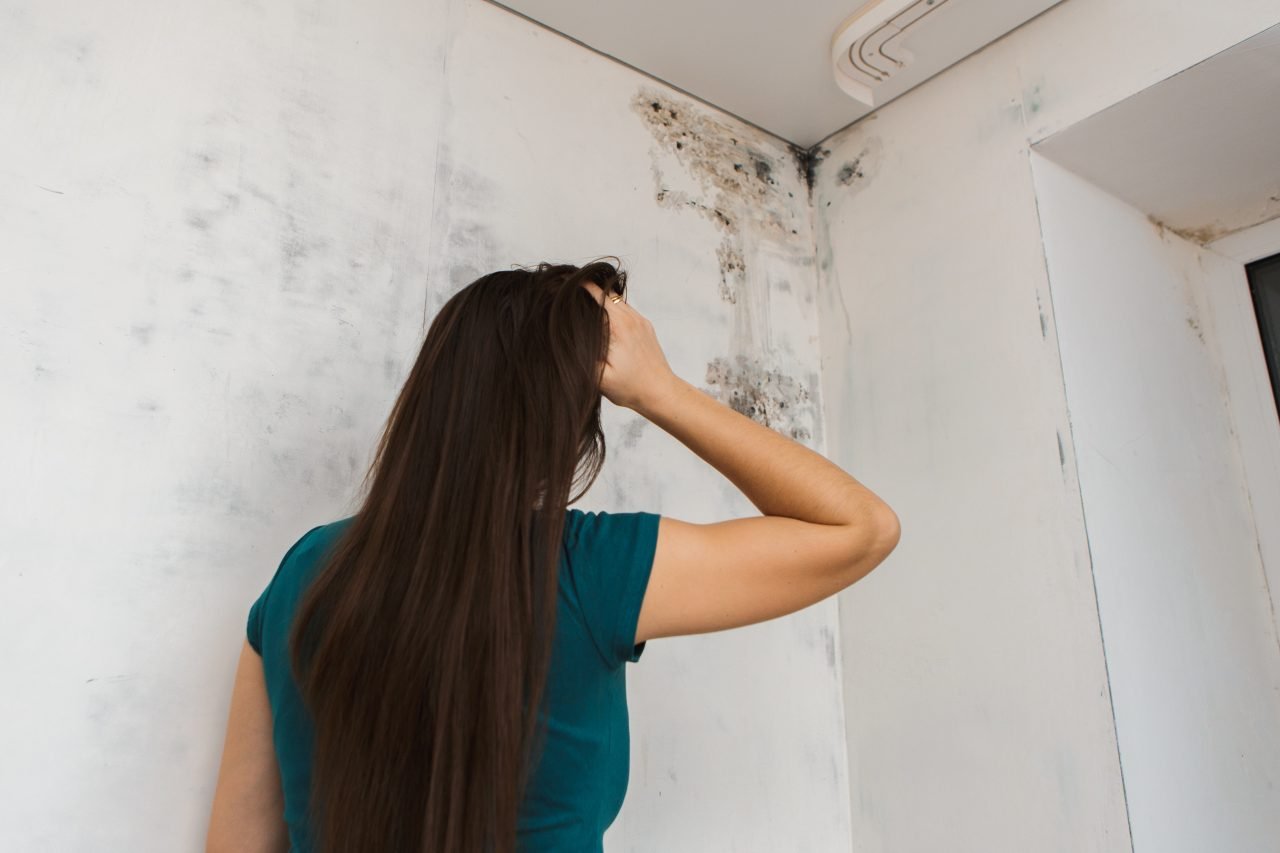
Dummy’s Guide to the Dangers of Ceiling Mold
There are many issues you can begin to have with your ceilings as your home gets older. Leaks can start in your roof and cause damage to your ceiling below. The weight load can increase above your ceiling, causing it to crack and even bow. The list goes on and on.
However, the one thing we see quite often when it comes to ceiling damage is mold. The pesky mold usually forms after leaks happen and it is quite difficult to remove with basic DIY steps if you wait too long. The ceiling mold will be black and if you take the time to look at it closely, you will see that it looks all fuzzy like a fungus.
Table of Contents
ToggleHow Does Ceiling Mold Form?
As we mentioned above, mold can begin to grow from standing water from a leak. However, it can also be caused by excessive humidity. While you may think that your mold issue is from one of those issues or the other, let us tell you that it is most likely a combination of the two.
There is an easy way to determine which issue is the main cause though.
How Mold Looks from Humidity
- The moldy ceiling is on an upper floor.
- The mold growth is worse on the ceiling around the perimeter of the room.
- Your attic is poorly insulated.
How Mold Looks from Leaking Roofs
- The mold and subsequent staining have a circular pattern.
- There is discoloration that is yellow or brown.
- The mold is growing in only one area.
The Three Types of Mold
1. Alternaria – This type of mold is the most common in homes and it doesn’t cause too many health issues. It is still important to remove it when you see it though, because it can cause asthma to flare.
2. Cladosporium – Cladosporium is black mold that slowly moves and covers larger areas of a ceiling over time. This mold can cause serious respiratory issues, so it is best to remove it as soon as you discover it.
3. Stachybotrys – This is the most toxic mold that can grow, and you won’t even want to try to remove it by yourself. If you find yourself with this type of mold on your ceiling, we recommend calling in a professional immediately.
Health Dangers Associated with Ceiling Mold
Tiny specks of mold are not going to cause any major health concerns. But those concerns will grow as the amount of mold on your ceiling grows. If you are experiencing more illnesses than normal or are having a difficult time breathing, you must consider the fact that you have mold on your ceilings somewhere in your home.
The main health concerns from mold include:
- Respiratory Symptoms
- Asthma is Getting Worse
- Respiratory Infections
- Allergic Rhinitis
- Eczema
- Bronchitis
- Hypersensitivity Pneumonitis
What to Do When You Discover Ceiling Mold in Your Home
The first thing you must do when you discover ceiling mold in your home is find out the cause of that mold. Do you have excessive moisture in that area due to humidity? Do you have a leak in your roof? Is there a nearby pipe that’s leaking?
Once you determine the root of the problem, you must fix it. While you can clean and remove the mold prior to fixing the issue, you must be aware that the mold will continue to grow back. Therefore, we always recommend fixing the problem first and then cleaning up the mold.
A household cleaner, mixture of water and vinegar, or a mixture of water and bleach can remove mold from your ceiling. You simply spray the cleaner on the mold and wipe it away with a cloth or sponge. It is best to spray the area and wipe two or three times to make sure you have removed all the mold.
Once you have removed the mold from your ceiling using cleaner, you can use a UV lamp to kill the rest of the mold spores. All you need to do is direct the light from the UV lamp onto your ceiling for twenty-four hours.
While you can easily remove mold from your ceiling using DIY methods, it is better to call in a professional like RCIP, ceiling fixers Perth. Professionals deal with ceiling mold all the time, so they know the precautions they must take during the removal process to avoid any serious health concerns. Plus, they know when the mold is truly gone, instead of guessing it is and finding out that it was only slowed down for a couple weeks before growing once again.





